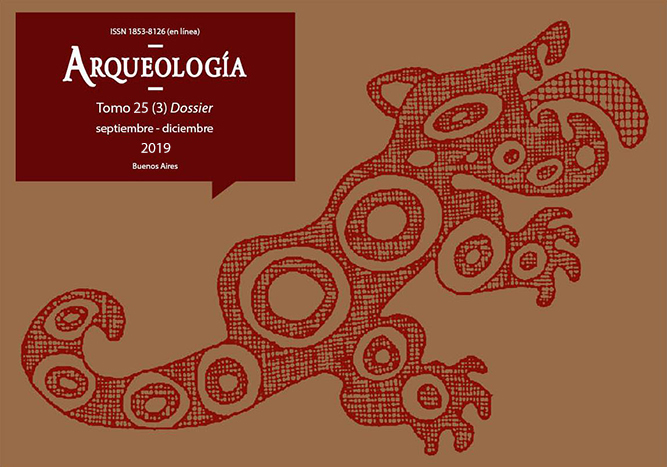Archaeological research in the middle Uruguay River basin. Contributions for the characterization of the paleoenvironmental scenarios during the Late Holocene
Keywords:
Uruguay River Littoral, Late Holocene, Social connectivity, Paleoenvironmental context
Abstract
This paper focuses on the assessment of recent data recovered in both margins of the middle Uruguay River basin. The new information was generated from fieldwork and laboratory analyses concerning the spatial distribution of lithic, pottery and other archaeological remains, chronological data, and fluvial landform evolution. This research aims to update our knowledge of fluvial human adaptations in Southern South America. The recovered cultural materials allowed us to support the characterization of the area as a node of distribution of objects and ideas, and of circulation and consumption of cultural materials during Late Holocene. We also contribute to the characterization of the paleoenvironmental and paleoclimatic dynamics in the Paraná-Uruguay basin through the interpretation of sedimentological, microbiological, and chronological data from the fluvial sedimentary sequences developed during the Late Holocene.Downloads
Download data is not yet available.
Published
2019-10-01
How to Cite
Castiñeira Latorre, C., Capdepont, I., Costa Angrizani, R., Blasi, A., Apolinaire, E., Zucol, A. F., Alvarez, M., & Maravilla, M. L. (2019). Archaeological research in the middle Uruguay River basin. Contributions for the characterization of the paleoenvironmental scenarios during the Late Holocene. Arqueología, 25(3), 119-142. https://doi.org/10.34096/arqueologia.t25.n3.7326
Section
Articles
Copyright (c) 2019 Arqueología

This work is licensed under a Creative Commons Attribution-NonCommercial-ShareAlike 4.0 International License.
Authors who publish in this journal agree to the following conditions:
- Authors retain copyright and yield to the journal right of first publication with the work registered with attribution license Creative Commons, which allows third parties to use the published always mentioning the authorship of the work and first publication in this magazine.
- Authors can make other independent and additional contractual arrangements for the non-exclusive distribution of the version of the article published in this issue (p. Eg., Inclusion in an institutional repository or publish it in a book), provided that clearly indicate that the work was published for the first time in this magazine.
- It allows and encourages the author / s to publish their work online (eg institutional or personal pages) before and during the process of revision and publication, as it can lead to productive exchanges and greater and more rapid dissemination of work published (See The Effect of Open Access).





(1)13.png)






1.jpg)
1.jpg)


13.png)
1.png)


(1)1.png)









